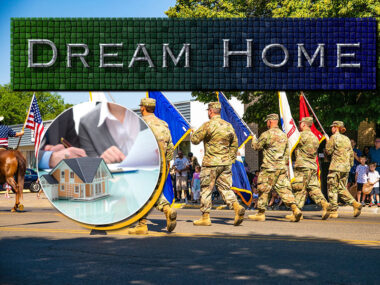Veterans Affairs home loans are popular with service members, and with good reason. They offer low interest rates, are backed by the federal government, and come with a full support team should you encounter any hiccups. If you did not (or could not) take advantage of a VA home loan when you originally took out a mortgage, you can refinance into the program. Or, you can refinance an existing VA loan in order to stay in the program.
Table of Contents
Refinancing a Conventional Loan Into a VA Home Loan
If you were not in the military, were not eligible at the time you needed a mortgage, or simply went with a conventional home loan, refinancing to a VA mortgage can reduce your interest rate. If you are eligible for a VA home loan, you are eligible to refinance into one.
While conventional refinancing can only refinance up to 90 percent of a home’s appraised value, a VA refinance can transfer the entire value.
You will have to pay a funding fee, as is typical for VA home loans, but this can be rolled into the cost of the new loan, rather than having to pay out-of-pocket. Up front, a refinance through the VA will not cost you anything. Unlike an IRRRL (see below), there may be an appraisal of your house and your credit score.
Why Refinance Your Mortgage Into a VA Loan?
There are other benefits to a VA mortgage refinance, as well: no out-of-pocket closing costs, no monthly mortgage insurance premiums, and being able to cash out up to 90 percent of your home’s value.
Plus, you get all the benefits of a VA home loan, including a government-backed loan, lower interest rates, assumability of the mortgage by another buyer when you sell your home, and foreclosure avoidance assistance.
VA Streamline Refinancing
If you already have a VA loan, you can still refinance it. This is called an Interest Rate Reduction Refinance Loan, or IRRRL. To be eligible, you must be refinancing to a lower interest rate, or from a variable rate loan to a fixed rate.
The VA does not require an appraisal or credit check, though individual lenders may. Remember that it is not the VA itself that offers the loans, but private lenders using VA-backed loans.
Any costs associated with the new loan, such as a typical 0.5 percent funding fee, will be rolled into the new loan, or by making the loan have an interest rate high enough to allow the lender to pay the costs. This means that there are no out-of-pocket costs up front.
There are a number of other advantages to an IRRRL over a traditional refinance. You only need to certify that you previously occupied the home, meaning you can have a secondary residence and refinance the first house that already has a VA mortgage. Should you have to go through an appraisal or credit check, the processes are often streamlined compared to conventional loans. Overall, it’s a fairly simple process that enables a service member to get a better interest rate on their VA home loan.
How To Get VA Mortgage Loan Refinancing
Getting a VA mortgage refinance is very similar to getting a VA loan. You must be an active-duty service member, an honorably discharged veteran, or the spouse of a either. A widow or widower of a veteran must be unmarried, and the veteran had to have died in the line of duty or due to a service-related injury. This does not apply for a widow or widower applying for an IRRRL, but the original VA loan must have been obtained before the spouse’s death.
A Certificate of Eligibility is not needed for an IRRRL, but if you have it, bring it to the lender to show your prior use of your VA home loan entitlement.
While the VA does not typically require an appraisal or credit check for refinancing, except for conventional-to-VA-loans, the private lender might. The common credit score target is about 620 for service members looking to refinance.
Image Source: https://depositphotos.com/





